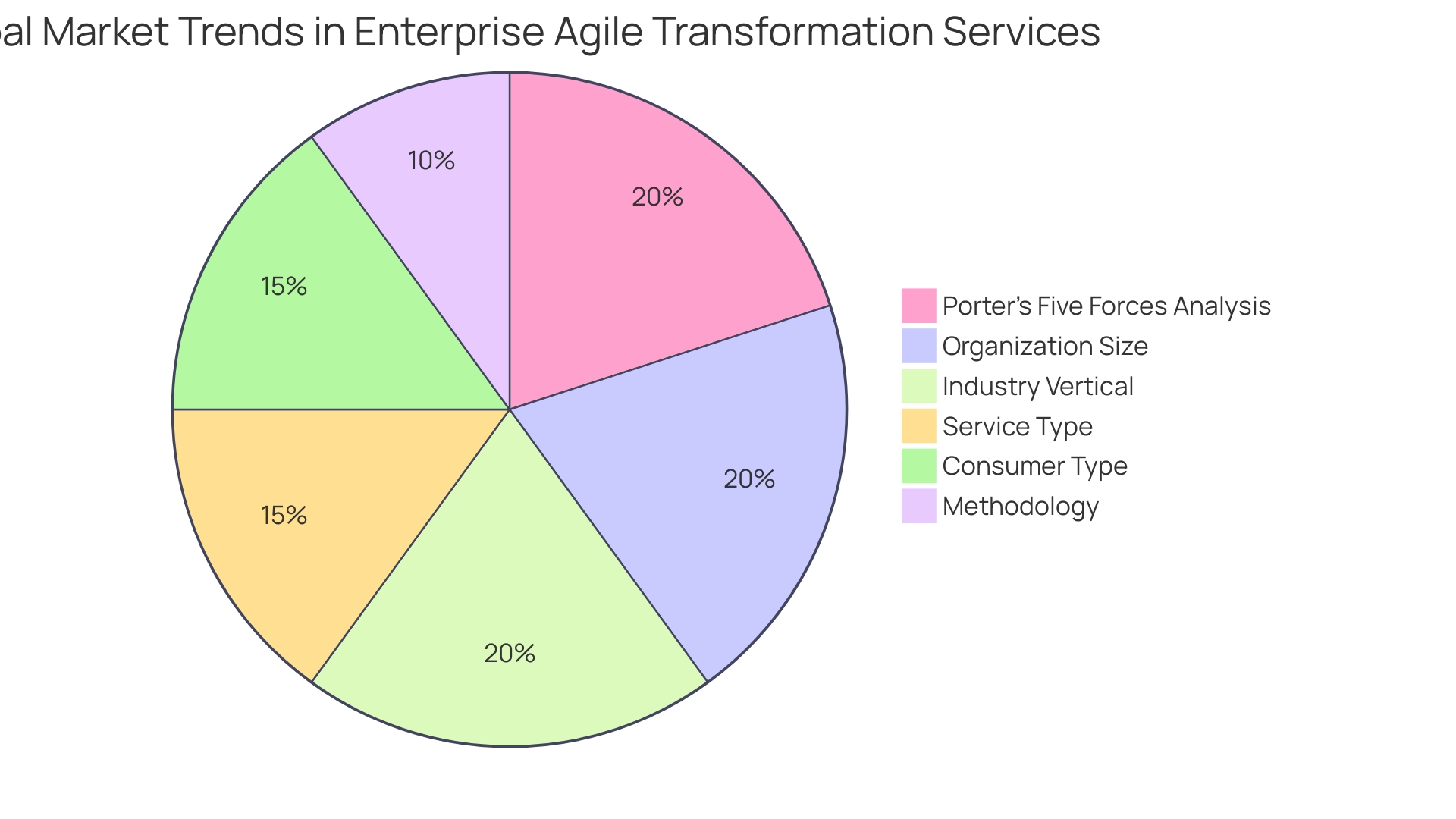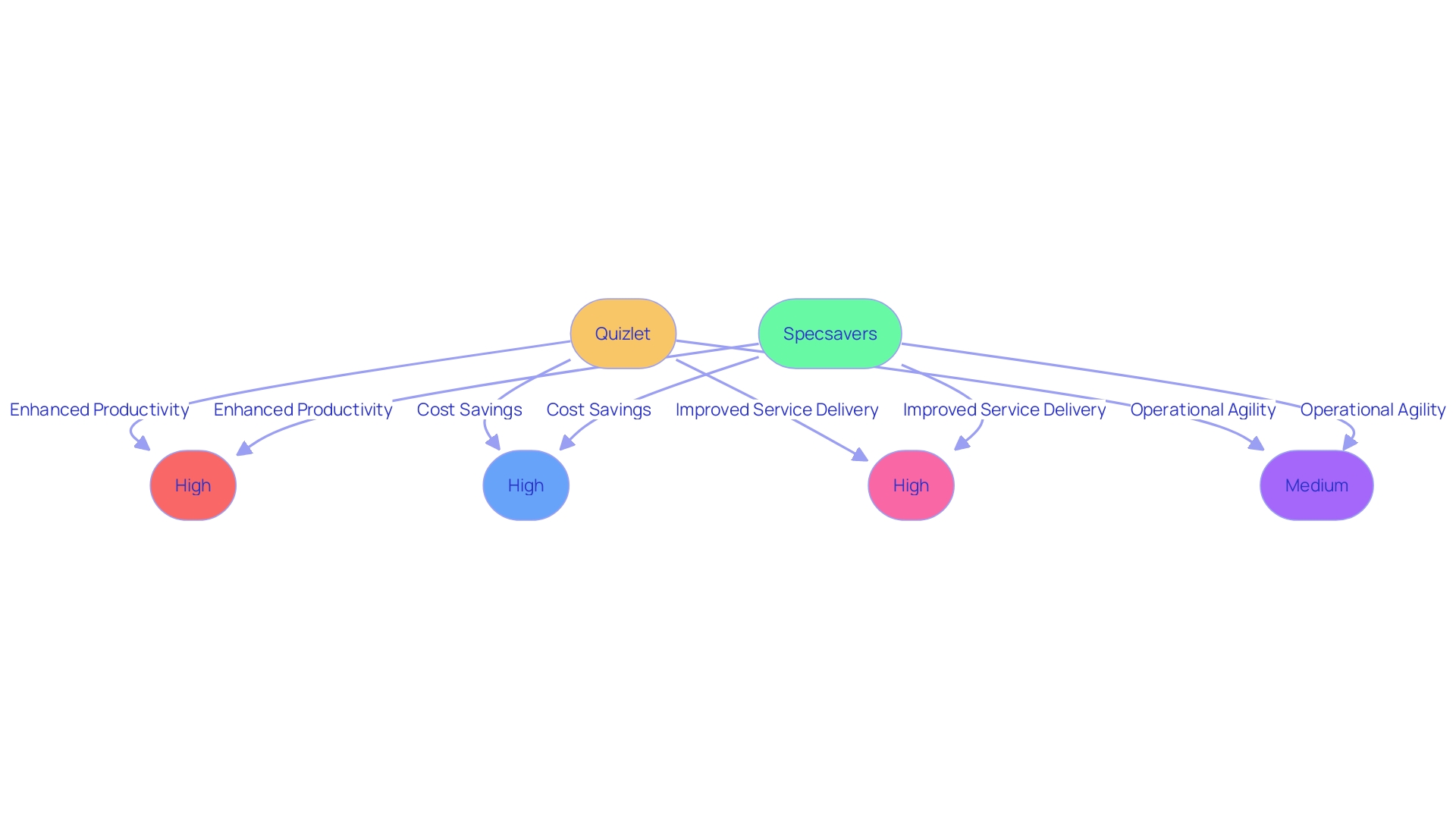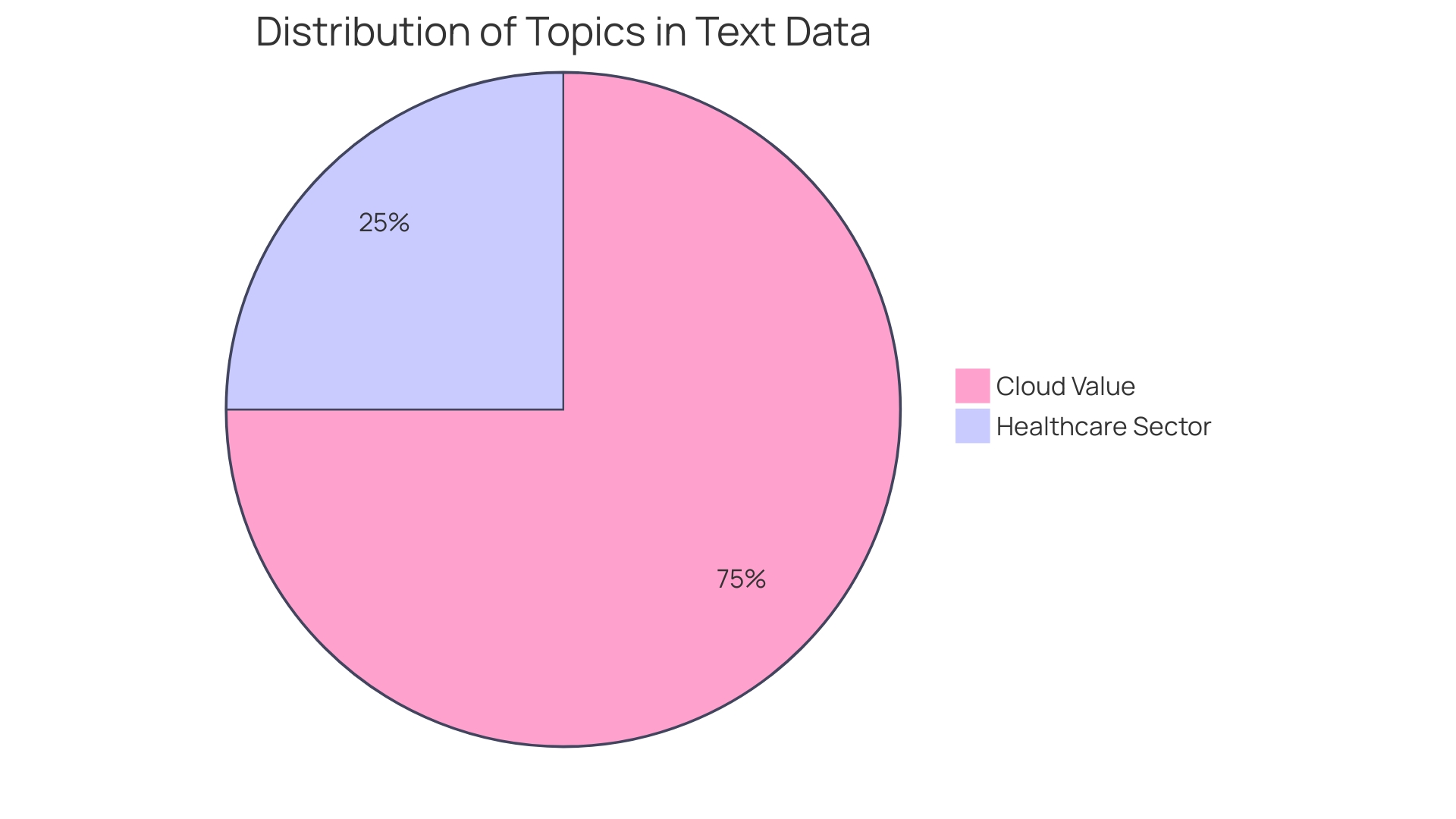Introduction
Cloud automation and orchestration have become vital in the agile transformation of businesses, providing a dynamic approach to managing and executing workflows. This article explores the role of cloud computing in process automation, the key technologies for streamlining business processes, the benefits of cloud-based automation, successful case studies, and best practices for implementing cloud-based automation. By embracing cloud automation, organizations can streamline operations, enhance productivity, and drive transformative outcomes.
The article highlights real-world examples and offers insights into how businesses can leverage automation to stay ahead in a competitive market. Whether you're seeking to optimize workflows, improve customer experiences, or achieve significant growth, this article provides valuable information and guidance on harnessing the transformative power of cloud-based automation.
What is Process Automation?
Cloud automation and orchestration play a pivotal role in the agile transformation of businesses, providing a dynamic approach to managing and executing workflows. They enable organizations to adapt swiftly to market demands and reduce the time spent on routine tasks. For instance, John Dee, a company known for its growth in demand, especially from export markets, found itself in a situation where manual operations were no longer sustainable. The unique challenges of meat processing, with its random release of products and varying production quantities, necessitated an upgrade to automated systems. After a thorough analysis and design process, they implemented a tailored solution that significantly improved tracking, accuracy, speed, and safety, proving the transformative power of automation in a complex industry.
Robotic Process Automation (RPA), a key component of cloud automation, leverages software robots to emulate human actions across various systems, performing tasks like data entry and transaction processing. These advancements connect disparate systems, allowing for seamless workflows and freeing up human resources for more strategic endeavors. In optometry, for example, Specsavers faced challenges with older machines unable to efficiently transfer data. By developing in-house technologies and business processes, they enhanced the customer experience by identifying health issues earlier and managing a global supply chain more effectively.
As the technology landscape evolves, the latest trends indicate a growing reliance on RPA to maintain customer satisfaction. By providing quicker responses and consistent information, businesses can foster loyalty and manage the scaling of operations more effectively. The automation of workflows and processes not only bolsters efficiency and accuracy but also presents an opportunity for businesses to innovate and stay ahead in a competitive market.
The Role of Cloud Computing in Process Automation
Embracing cloud computing has become a hallmark of organizations that prioritize agility and innovation in their automated workflows. With cloud services, businesses access on-demand resources like computing power, storage, and applications, which is vital for scaling automated processes efficiently. This flexibility is particularly evident in healthcare, where the migration from traditional on-site systems to cloud solutions has been transformative, enhancing accessibility, scalability, and collaboration.
For example, Specsavers, with its complex global supply chain and niche optometry equipment, has leveraged cloud technology to address the challenges of integrating older machines that lack API connectivity. Through cloud solutions, Specsavers has enriched customer experiences, such as early health issue identification.
Similarly, Vertex Pharmaceuticals has harnessed machine learning on cloud platforms to accelerate their drug discovery process, analyzing vast datasets from experiments more accurately and swiftly.
Moreover, a study highlighting the importance of cloud services for long-term business viability cites SAP's strategic push for cloud adoption as essential for staying competitive in today's market. Like Netflix and Apple's industry-transforming bets on technology, companies adopting cloud services are positioning themselves for significant growth.
Organizations like Delivery Hero exemplify the operational benefits of cloud automation, addressing common IT challenges such as account lockouts. By automating the recovery process, they reduced the time employees were locked out, enhancing productivity.
In the broader context, businesses recognize that automation shapes customer experiences, drives higher revenue, and boosts team productivity. However, implementing enterprise-wide IT automation often encounters hurdles like skill gaps, technological limitations, and cybersecurity concerns.
Statistics from a recent report on cloud value underscore the impact of cloud technology across IT productivity, business innovation, and advanced technologies like generative AI. It reveals how organizations can maximize cloud ROI by balancing investments with the anticipated benefits, which are instrumental in planning migration strategies.
As the digital landscape evolves, the adoption of cloud services is propelled by factors such as the increasing use of big data, IoT, ML, and real-time analytics by AI. Companies leveraging cloud computing are better positioned to respond rapidly to market changes and drive market growth.
Key Technologies for Streamlining Business Processes
To achieve agile transformation, organizations must embrace a suite of innovative technologies that streamline operations and empower cloud automation.
- Robotic Process Automation (RPA) utilizes software robots, or 'bots', to automate routine, rule-based tasks. These bots efficiently manage data entry, validation, and report generation, imitating human interactivity with various systems to enhance productivity.
- Artificial Intelligence (AI) and Machine Learning (ML) propel intelligent automation forward, leveraging data to learn, predict outcomes, and make decisions autonomously. These sophisticated technologies are adept at handling complex tasks requiring cognitive skills, including natural language processing, image recognition, and sentiment analysis.
- Data Analytics is the backbone of process automation, offering critical insights into performance metrics, identifying bottlenecks, and suggesting enhancements. Analyzing data produced by automated processes helps optimize workflows and fosters data-centric decision-making.
For leaders, understanding what to automate and how to implement these technologies effectively is crucial. Reflect on which manual processes to target for automation, identify inefficiencies, and assess the integration cost and time for RPA software. Begin with smaller tasks, gradually progressing to more complex workflows and prioritizing those that are time-intensive.
The synergy of RPA and AI is transformative, enabling companies to refine processes, boost efficiency, and make informed decisions. A robust strategy, dispelling automation myths, and comprehending the benefits are key to unlocking automation's full potential. Continuous monitoring ensures that automation objectives are met, with documentation of results and learnings paving the way for future projects.
The case of Louvre Hotels Group, in partnership with RobosizeME, exemplifies automation's impact. By deploying RobosizeME's advanced automation technology, they saved 188 hours monthly on rate code headers and 386 hours on rate code details, showcasing the remarkable efficiency gains possible in the hospitality industry.
In the era of digital disruption, understanding digital transformation is pivotal to success. It involves a holistic approach to incorporating digital technology across all business facets, fundamentally altering operations and enriching customer value. The retail sector, for instance, may focus on omnichannel experiences and supply chain optimization as part of its digital transformation goals.
IoT's rise and OODA's expertise in advanced intelligence and threat management underscore the evolving technological landscape. Cloud computing models and deployment strategies, such as hybrid, private, or public clouds, must be tailored to specific organizational needs.
In summary, integrating RPA, AI, ML, and Data Analytics into business processes is essential for organizations seeking agility and innovation in the cloud-driven digital age. Strategic implementation and continuous improvement are central to harnessing the transformative power of these technologies.

Benefits of Cloud-Based Automation
Cloud automation is revolutionizing how organizations operate by streamlining repetitive tasks and enhancing productivity. By integrating cloud-based automation into their workflows, companies like Quizlet have been able to focus on innovation and growth while reducing operational overhead. Quizlet's adoption of Harness Cloud Cost Management exemplifies the strategic advantage of automating cost-saving recommendations, leading to a more efficient utilization of cloud resources. By simplifying the process for engineers to act on these recommendations, Quizlet minimized manual intervention and maximized the potential for cost savings.
Similarly, Specsavers tackled unique challenges in the optometry space by automating business processes, addressing the limitations of older medical devices unable to seamlessly connect or transfer data. With a focus on enriching customer experiences, Specsavers underscores the transformative nature of cloud automation in improving service delivery and operational agility.
The rapid adoption and scaling of cloud-based automation also align with emerging regulatory proposals aimed at ensuring the safety and cybersecurity resilience of AI technologies. These changes highlight the importance of robust automation strategies that prioritize security and compliance, even as organizations strive for increased efficiency and faster time-to-market.
In this context, workflow automation serves as a critical tool for businesses of all sizes, enabling them to automate mundane tasks such as sending notifications or managing permissions. The benefits are clear: from enhancing customer experiences to driving higher revenue and productivity, as corroborated by a report from Zapier, which found that nearly all workers in smaller businesses handle such repetitive tasks.
Moreover, studies like the Total Economic Impact method developed by Forrester Research reveal that investing in intelligent automation can significantly contribute to revenue growth, with a composite customer experiencing a 73% increase in overall net present value (NPV) benefit and a 5.4% compound annual growth rate (CAGR) over three years. Thus, the strategic deployment of cloud automation not only propels operational excellence but also leads to tangible financial gains for organizations.

Case Studies: Successful Implementation of Cloud-Based Automation
Organizations across various sectors are harnessing cloud-based automation to revolutionize their operations and drive transformative outcomes. For instance, a manufacturing giant revamped their supply chain management by adopting cloud automation, resulting in swifter lead times and enhanced accuracy in orders. Meanwhile, a financial services corporation automated customer onboarding and loan approvals, achieving expedited processing and heightened client satisfaction. Similarly, an e-commerce enterprise streamlined order fulfillment through cloud automation, leading to quicker processing, better inventory management, and fewer shipping discrepancies.
To illustrate the power of cloud automation, consider the experience of Quizlet, a global education platform. They adopted Harness Cloud Cost Management to automate cost-saving measures, subsequently developing an automated workflow to enact further savings with minimal effort from engineers. In another case, Lindy's AI assistants needed seamless integration across a multitude of services to function effectively. They faced the daunting task of developing these integrations, which could have delayed their market entry. By leveraging cloud automation, they significantly condensed development timelines and enhanced their service offerings from the outset.
Recent insights underscore that automation's impact varies across organizations, aligning with distinct priorities and often focusing on the most valuable processes. Benefits acknowledged include improved customer experiences, revenue growth, and team productivity. However, challenges like skill gaps, technical limitations, and cybersecurity concerns can hinder enterprise-wide automation adoption.
Understanding the intricacies of automation, particularly Robotic Process Automation (RPA), is essential. RPA employs software robots to undertake tasks traditionally performed by humans across various systems, enhancing efficiency and freeing up human resources for more strategic work. The success of automation hinges on identifying valuable use cases, assessing potential ROI, and recognizing the qualitative benefits it introduces to organizations.
In conclusion, cloud automation is an indispensable tool for businesses seeking agility and efficiency. By embracing this technology, companies can not only streamline their internal processes but also enhance their customer service and achieve significant growth.

Best Practices for Implementing Cloud-Based Automation
When implementing cloud automation, it's essential to have a structured approach to achieve efficiency and alignment with business goals. Begin by precisely identifying your automation objectives, pinpointing processes ripe for automation, and articulating the anticipated results. A comprehensive process assessment is crucial to uncover automation opportunities, assessing task complexity, volume, and frequency to ensure a good fit for automation.
Selecting the right technology is a key decision—opt for tools that align with your automation aspirations, ensuring they offer scalability, seamless integration, and user-friendliness. Given that automation often disrupts existing workflows, a robust change management plan is necessary to facilitate smooth adoption.
Governance and control mechanisms must be established to ensure compliance with policies and regulations. This includes defining access controls and data privacy measures, alongside implementing monitoring systems to oversee automated operations.
Monitoring and optimization should be ongoing; evaluate automated process performance and solicit feedback to refine and enhance efficiency. Providing comprehensive training and support is also vital, fostering a learning culture and equipping employees with the skills needed for the automation journey.
For instance, Quizlet's experience with Harness Cloud Cost Management exemplifies these best practices in action. By automating cost savings recommendations through an automated workflow, they streamlined their cloud services management, making it effortless for their engineers to focus on key tasks.
Moreover, with regulatory proposals emphasizing the need for safe and resilient AI systems, enterprises must prepare by ensuring their cloud automation strategies conform to new cybersecurity requirements. This includes detailed reporting on AI models and the platforms they operate on.
In the realm of DevOps, automation tools have reshaped the software development lifecycle, resulting in accelerated delivery and improved alignment with business objectives. These tools include continuous integration, continuous delivery, and infrastructure as code, among others.
Lastly, a well-crafted cloud migration strategy is paramount, as seen in the meticulous planning required for Lindy's AI assistant integrations. A strategy that includes technical, operational, financial, and security considerations can minimize disruption, control costs, and mitigate risks during the transition to cloud infrastructure.
Conclusion
Cloud automation is essential for businesses undergoing agile transformation. By embracing cloud-based automation, organizations can streamline operations, enhance productivity, and drive transformative outcomes. Key technologies such as Robotic Process Automation (RPA), Artificial Intelligence (AI) and Machine Learning (ML), and Data Analytics play a crucial role in streamlining business processes and enabling informed decision-making.
Cloud-based automation revolutionizes how businesses operate by streamlining repetitive tasks, reducing operational overhead, and driving revenue growth. Successful case studies across various sectors demonstrate the transformative impact of cloud automation in areas such as supply chain management, customer onboarding, and order fulfillment. These organizations have achieved swifter processing, enhanced accuracy, and improved customer satisfaction through the adoption of cloud-based automation.
Implementing cloud-based automation requires a structured approach. Organizations need to identify automation objectives, assess potential use cases, and select the appropriate technologies. It is crucial to have a robust change management plan, establish governance and control mechanisms, continuously monitor and optimize automated processes, provide comprehensive training and support, and prioritize cybersecurity requirements.
A well-crafted cloud migration strategy is also essential for successful implementation.
In conclusion, cloud automation is an indispensable tool for businesses seeking agility, efficiency, and growth. By leveraging cloud-based automation, organizations can streamline internal processes, enhance customer service, and achieve significant outcomes. It is crucial to carefully plan and adhere to best practices to maximize the transformative power of cloud automation in today's competitive market.




